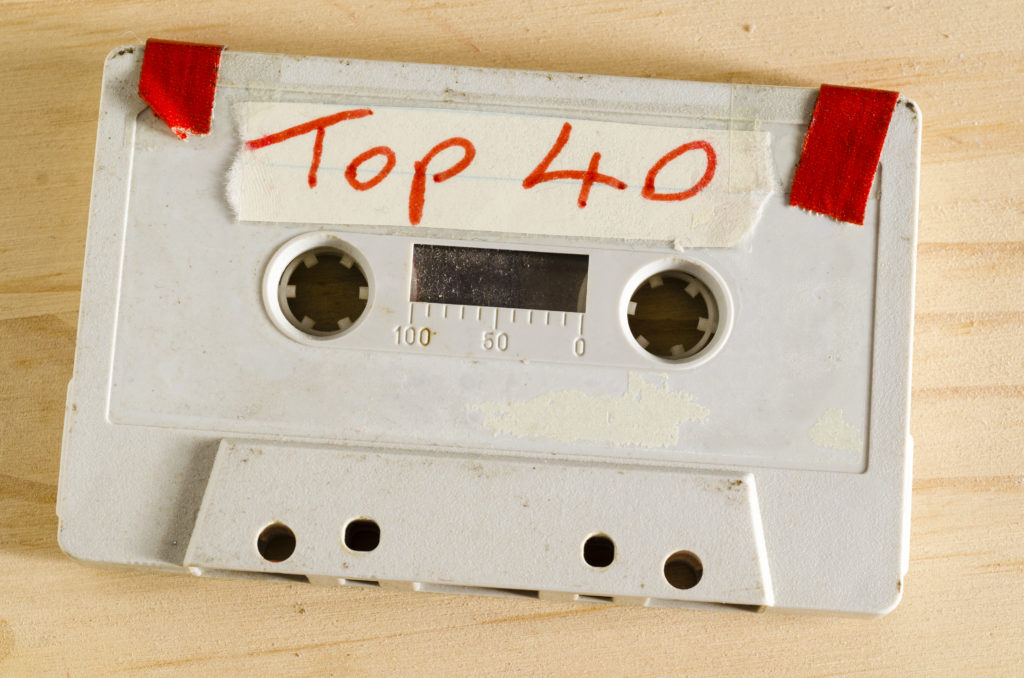If you’re anything like me, you may feel like COVID has been going on forever (vs. for about 2.5 years). We’ve been in an extended time warp and now mark time in terms of the pandemic, saying “oh that happened before (or after) COVID,” just like some of us used to say “that was before (or after) we had kids.”
In This Article, We’ll Take a Look at The Top 40 Events on the COVID-19 Timeline, Dating Back From “The Beginning” (Think: Late 2019). Get Wise(r) About These Key Moments Below…

1. December 31, 2019. And So It Begins…
China tells the World Health Organization that a “pneumonia of unknown cause” has affected 41 people in Wuhan, China (the Hubei Province). The following day, Chinese officials shut down the Huanan Seafood Wholesale Market (the wet market that’s believed to be the source of the mysterious virus).
Insider Info: In retrospect, the initial infection of “patient zero” probably happened as far back as November 17, 2019.1
2. January 5, 2020.
Chinese public health officials determine the genetic sequence of the unknown pneumonia virus (Wuhan-Hu-1) and post it on an online database.
2 days later, on January 7, 2020, the Chinese government says a “novel” (meaning new and never seen before) coronavirus is causing the pneumonia-like illness in Wuhan.
On this same day, the Centers for Disease Control and Prevention (the CDC) starts doomsday prepping (just in case) and establishes the “Coronavirus Management System.”
On January 9, 2020, the World Health Organization releases a statement to the international community, confirming that a novel coronavirus is making the rounds in Wuhan, China.
3. January 10, 2020.
Although most Americans are only vaguely aware of what’s happening in Wuhan, China at this point (if at all), the CDC continues to track the number of COVID-19 cases in China and launches a COVID-19-dedicated website.
On January 11, 2020, the CDC issues a Level 1 Travel notice to (and from) China. The first COVID-19 related death in Wuhan, China is reported on this same day.
4. January 20, 2020.
The CDC reports the first laboratory-confirmed case of COVID-19 on U.S. soil (from samples take from a patient in Washington State on January 18).
In response, the CDC activates its Emergency Operations Center.
5. January 23, 2020.
The city of Wuhan, China officially goes on lockdown and the rest of the world looks on as harrowing images of sickness and suffering in the Hubei province are splashed across the news media.
6. January 30, 2020.
The WHO declares COVID-19 a “Global Public Health Emergency” and the CDC says person-to-person transmission has occurred in the U.S.
Insider Info: Before this, it was thought that only people who had direct contact with animals infected with COVID-19 could catch the virus. The news that SARS-CoV-2 can be passed from person to person is a game-changer (and not in a good way).
7. January 31, 2020.
The Department of Health & Human Services declares a public health emergency. President Trump puts a travel restriction on people entering the U.S. from China.
A few days later, on February 4, the FDA approves the CDC’s Emergency Use Authorization (EUA) request for its SARS-CoV-2 diagnostic test. (Note: On February 8, the tests are said to produce “unreliable” results). This is just the beginning of the United States’ COVID testing woes.2
8. February 11, 2020.
The World Health Organization officially names the disease spreading across the planet, COVID-19 (which stands for Coronavirus Disease 2019).
Insider Info: COVID-19 is the name of the disease. The name of the virus is SARS-CoV-2 (Severe Acute Respiratory Syndrome Coronavirus 2).
PediaTrivia: This isn’t the first time the world has encountered a coronavirus. There are actually 7 coronavirus strains, 4 of which are nothingburgers and 3 of which have caused serious disease in humans.3
By February 26, 2020, COVID-19 has been identified on every continent, except Antarctica.
9. March 8, 2020.
Italy gets hit hard by COVID-19 and the country goes into lockdown.
10. March 11, 2020.
The World Health Organization officially declares COVID-19 a pandemic. Two days later, Trump declares COVID-19 a National Emergency, which releases billions of dollars in federal funds to fight the spread of the disease.
11. March 14, 2020.
The CDC issues a “no sail order” for cruise ships and the cruise industry takes a huge financial hit.
PediaTrivia: As you may remember, the British-registered Diamond Princess was the first cruise ship to have a major COVID outbreak on board. Passengers were stuck on the cruise ship, in quarantine, for about a month. Nearly 20% of the passengers contracted COVID and 9 died.4
12. March 15, 2020.
The U.S. begins to shut down in a desperate attempt to slow the spread of COVID-19. New York City public schools shutter, as do bars and restaurants in Ohio. Hospitals begin to prioritize the sickest patients and cancel elective surgeries. Parents are forced to wearing many hats at home (one of which is “teacher with no training”).
13. March 17, 2020.
The Moderna Therapeutics biotech company begins its first human trial for the COVID-19 vaccine that it’s developed.
14. April 3, 2020.
After putting out conflicting info about the role of masks in the fight against COVID, the CDC advises Americans to wear face coverings in public.5
15. April 10, 2020.
The United States now has the most COVID-19 related deaths of any country in the world. 5 days later (on April 15, 2020), the number of COVID-19 cases reaches 2 million worldwide. At this point, all 50 U.S. states report at least 1 COVID-19-related death.
16. April 30, 2020.
Operative Warp Speed goes into effect and the race to get a COVID-19 vaccine approved (by the U.S. Food and Drug Adminstration) is ON.

About a week later, the unemployment rate hits a high of 14.7% and people tighten their purse strings.6
17. May 28, 2020.
The number of COVID-related deaths in the U.S. reaches 100,000. The CDC doubles down on its recommendations and encourages Americans to continue to wear a face mask in public, practice social distancing, and keep washing their hands. At this point, there are 6 million COVID-19 cases worldwide.
18. May 30, 2020.
President Trump decides to break up with the World Health Organization. He makes it official on July 7.

19. July 9, 2022.
The WHO says COVID-19 is airborne. Many scientists think the organization should have said this sooner. We continue wearing face masks in the U.S. The WHO also highlights the fact that COVID can be spread by asymptomatic individuals. This is one of the reasons it’s been so hard to stop its spread.
20. September 28, 2020.
COVID-19 related deaths surpass 1 million worldwide. Moderna & Pfizer are both in phase 3 COVID-19 clinical trials for their respective COVID-19 vaccines. Many schools are conducting classes on zoom, as teachers and parents, alike, tear their hair out.
21. October 2, 2020.
President Trump and First Lady Melania Trump test positive for COVID-19. Trump is hospitalized and receives a combination of Regeneron, Remdesivir, and Dexamethasone to treat his illness. He gets released from the hospital 3 days later.
On October 22, the FDA approves Remdesivir as the first-ever drug to treat COVID-19. We’re making some (slow) progress against this disease, as Americans (and the rest of the world) wait on a vaccine.
22. November 1, 2020.
Cruise ships are put back in the water (the no sail order is over). At this point, the U.S. is seeing 100,000 cases of COVID-19 per day.
23. December 11, 2020.
The FDA issues an Emergency Use Authorization (EUA) for Pfizer-BioNTech’s COVID-19 vaccine. It couldn’t come sooner, as the U.S. death toll reaches 300,000.
3 days later (on December 14), Sandra Lindsay, a nurse in New York, becomes the first American outside of a clinical trial to get the COVID-19 vaccine. The vaccine roll-out begins. Healthcare workers (and the President) are first at bat.
24. December 18, 2020.
The FDA grants an EUA (Emergency Use Authorization) for Moderna’s COVID-19 vaccine.
On this day, health officials in South Africa tell the world about a new Coronavirus variant (501Y.V2) that’s circulating in their country.
Around this time, officials in the United Kingdom report that a separate variant (the B.1.1.7 variant) is spreading across the U.K.
Talk of mutations, variants, and strains abounds.
25. February 21, 2021.
The FDA provides Emergency Use Authorization for a 3rd COVID-19 vaccine, the Johnson & Johnson vaccine. Although this vaccine isn’t as protective as the other two, it only requires one shot, which was appealing to many.
(Flash Forward: In April of 2021, the CDC ends up pausing the use of the J&J vaccine for 10 days because of worrisome reports that it’s caused blood clots in a very small percentage of recipients. Although the J&J vaccine is still available today, the whole blood clot thing didn’t help its reputation in the eyes of the public OR in the eyes of the CDC. Currently, the J&J vaccine is only approved for people 18 & up who don’t qualify for the Pfizer and Moderna vaccines or who refuse to get more than 1 shot for their primary COVID series.)
26. March 8, 2021.
The CDC says there are perks to getting vaccinated and states that fully vaccinated people can now hang out indoors without masks. Cue the socializing (although many people have forgotten how to do it).
By March 13, 2021, over 100 million COVID-19 vaccines have been administered in the U.S.
6 days later (on March 19), the CDC says kids in school can socially distance at 3 feet (vs. 6 feet). Baby Steps!
27. May 10, 2021.
The FDA expands the Emergency Use Authorization for Pfizer-BioNTech’s COVID-19 vaccine to include 12-15 year olds.
28. June 1, 2021.
The Delta variant takes over and becomes the dominant strain in the U.S. This sparks a wave of infections in our country and puts a damper on another summer.
Reality Check: Despite the Delta variant wave, the number of new COVID cases in the U.S. is at its lowest level since March 2020. Progress continues to be made against COVID-19 with the help of our country’s vaccine program.
29. August 23, 2021.
The FDA officially approves Pfizer’s COVID-19 vaccine. (This is an upgrade from its Emergency Use Authorization status.) The Pfizer-BioNTech vaccine is now marketed as Comirnaty for individuals 16 & up. Teens and preteens 12-15 can still get it under the Emergency Use Authorization. At this point, roughly 70% of adults in the U.S. have gotten at least one dose of a COVID-19 vaccine.7
In September 2021, booster shots become a thing.
30. October 29, 2021 (aka The Moment Many Parents Have Been Waiting For).
The FDA says kids 5-11 years of age can get the Pfizer-BioNTech COVID-19 vaccine. Parents of school-aged kids breathe a big sigh of relief, while parents of children 6 months-4 years continue to twiddle their thumbs.
31. November 26, 2021: Hello Omicron.
A new COVID variant bursts onto the scene. The World Health Organization names it Omicron (after a letter in the Greek alphabet).
32. December 27, 2021.
The CDC reduces the amount of time people with COVID-19 have to quarantine (from 14 days to 5 days). Happy Holidays!

33. January 3, 2022.
Kids 12-15 years of age are now eligible for the Pfizer-BioNTech COVID-19 booster shot.
At the end of January 2022, the FDA makes it official and formally approves the Moderna vaccine for use in people 18 years & older. (As with the Pfizer vaccine, this is an upgrade from its Emergency Use Authorization). Moderna’s vaccine is now marketed at Spikevax (a nod to the now infamous spikes coming off the surface of the COVID-19 virus).

34. February 25, 2022.
The CDC further relaxes its mask mandate and says people should mask based on their individual risk. For example, the organization encourages mask-wearing in people who are particularly vulnerable to COVID-19 infections (think: those who are immunocompromised and those who live in areas of high community spread).
35. May 12, 2022.
The number of COVID-19 related deaths in the U.S. reaches 1 million. Flags are flown at half-mast.
36. May 17, 2022.
The FDA says kids 5-11 years of age can now get the Pfizer-BioNTech booster shot.
37. June 18, 2022.
The CDC says kids 6 months-5 years of age can get vaccinated too. Wahoo!

38. August 31, 2022.
The FDA approves Pfizer’s and Moderna’s new bivalent COVID booster shots ahead of the 2022-2023 cold & flu season. These booster shots protect against BOTH the original COVID virus strain (SARS-CoV-2) and two common Omicron subvariants (BA-4 and BA.5).
39. October 12, 2022.
The CDC says kids 5 & up are now eligible for Pfizer’s bivalent booster shot and kids 6 & up can get Moderna’s bivalent booster shot.
40. November, 2022.
Concerns about a possible “tripledemic” (a simultaneous surge in COVID-19, flu, and Respiratory Syncytial Virus-aka RSV-cases) continue to mount.
Reality Check: Although officials expect the COVID-19 virus cases to increase as we get deeper into this year’s cold & flu season, we have to remind ourselves that we’re much better off than we were 2 years ago (and even a year ago).
At this point, we have about 290,000 new COVID cases in the U.S. per week, and about 2,300 COVID-related deaths per week, as well. We obviously want these numbers to be lower, but this is a fraction of what they were 2 years ago. For example, in mid-November of 2020, there were about 920,000 new COVID cases per week and about 8,400 COVID-related deaths per week. And in mid-November of 2021, there were roughly 540,000 new cases per week and about 8,200 deaths per week.8
The Bottom Line
While COVID-19 has undeniably taken a toll on our collective mental and physical health, gone are the days of being in total lockdown, daily zoom school, and leaving our groceries outside for hours to decontaminate. Our lives now have some semblance of “normal” (even if it’s a “new normal.”). In addition, our knowledge of the COVID-19 virus continues to grow and we now have weapons (such as vaccines and medications) to combat it.
As the COVID-19 virus continues to mutate and throw different variants at us, we have to stay on our toes and take the time and energy to protect ourselves and those around us.





